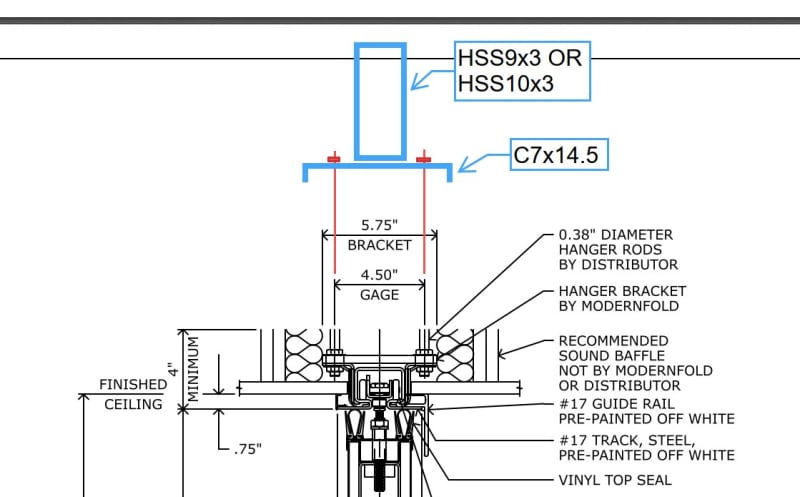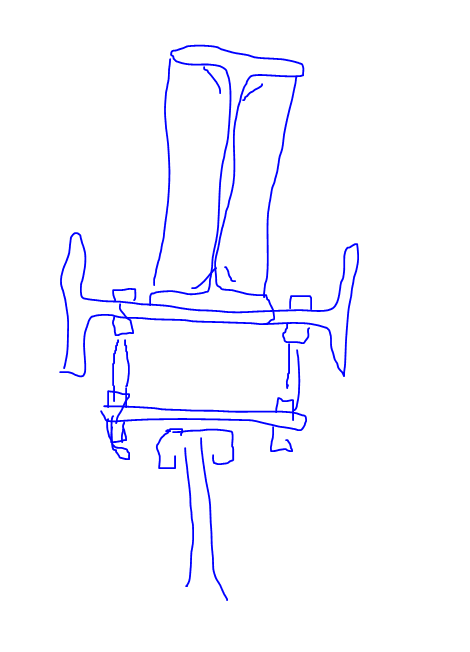I'm designing the support for a 24' long hanging folding partition (10' tall). Spoke with manufacturer for loads, deflections, and confirmation that guides are being installed (so wall can only be folded at one end not at the center. The fun part of this one is that it's being installed at a new 10' ceiling, but the existing roof is vaulted and around 30' high (wood trusses). So, the kickers that you'd normally see aren't an easy option. I've been looking into beam designs that can take the torsion of the interior wind load on the partition and I landed on this (see image). We're in SDC B and per the ASCE Arch Components in SDC B + Importance Factor of 1.0 are exempt from the Seismic requirements in even the Seismic of Nonstructural Components Chapter. (If I use the 5 to 10% of weight for seismic like others have stated in other threads on this, wind still controls when the doors are unfolded). I left 3/4" between the partition's hanging rods and the edge of the tube. I'll weld the channel to the tube. Just figured I'd see if anyone saw any issues with this that I'm missing or if anyone has come across a similar situation and used something different. Thanks!!



![[pipe] [pipe] [pipe]](/data/assets/smilies/pipe.gif)
